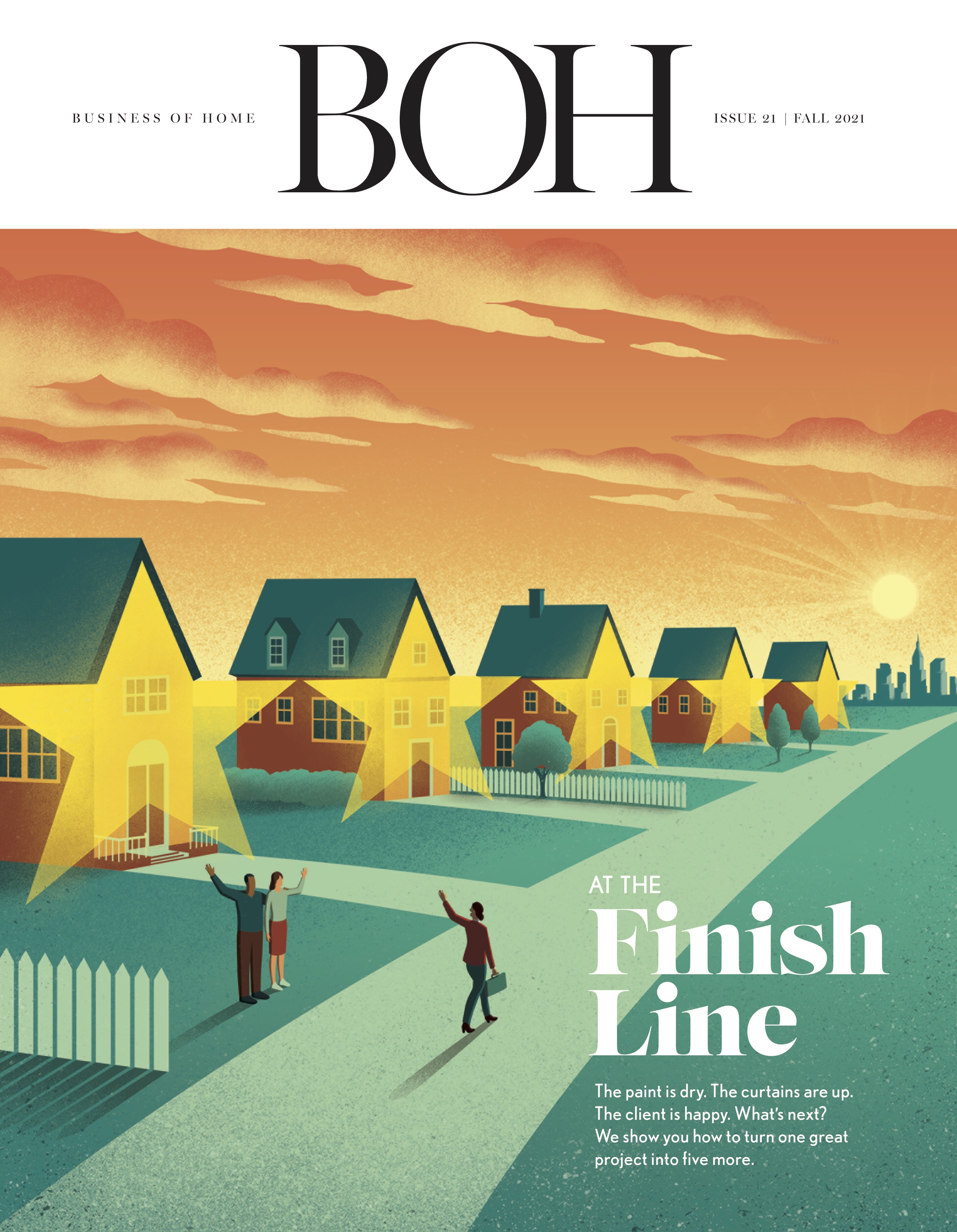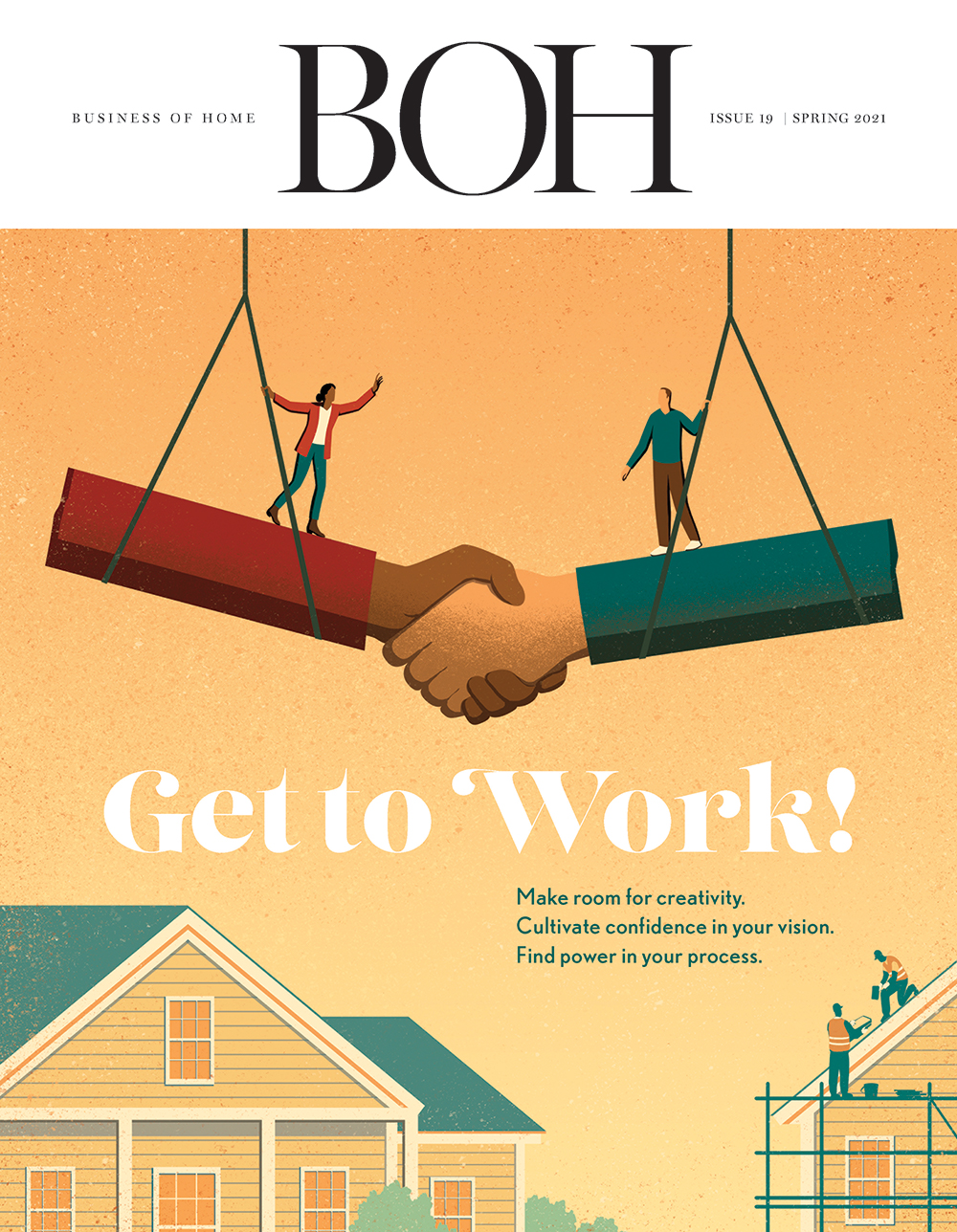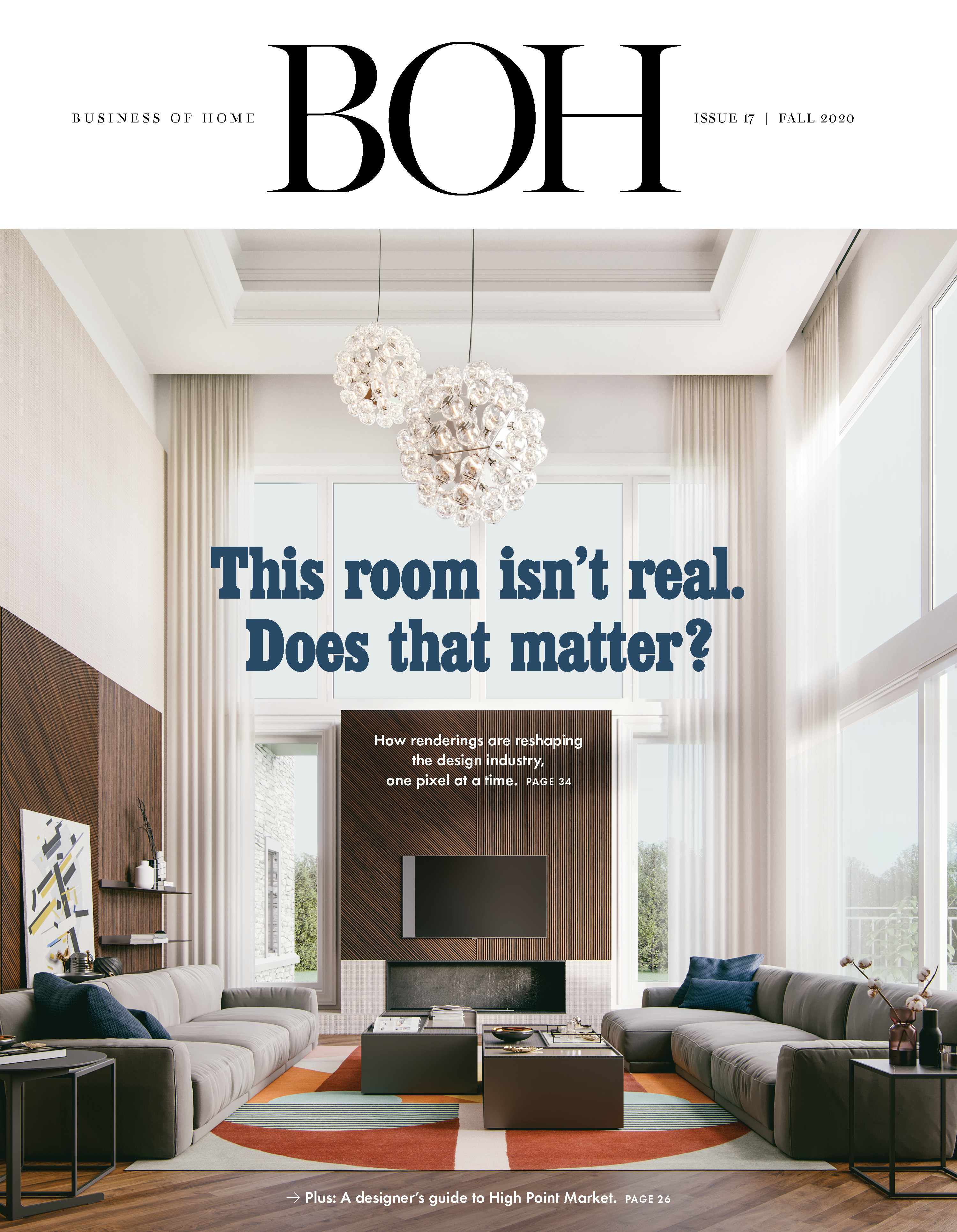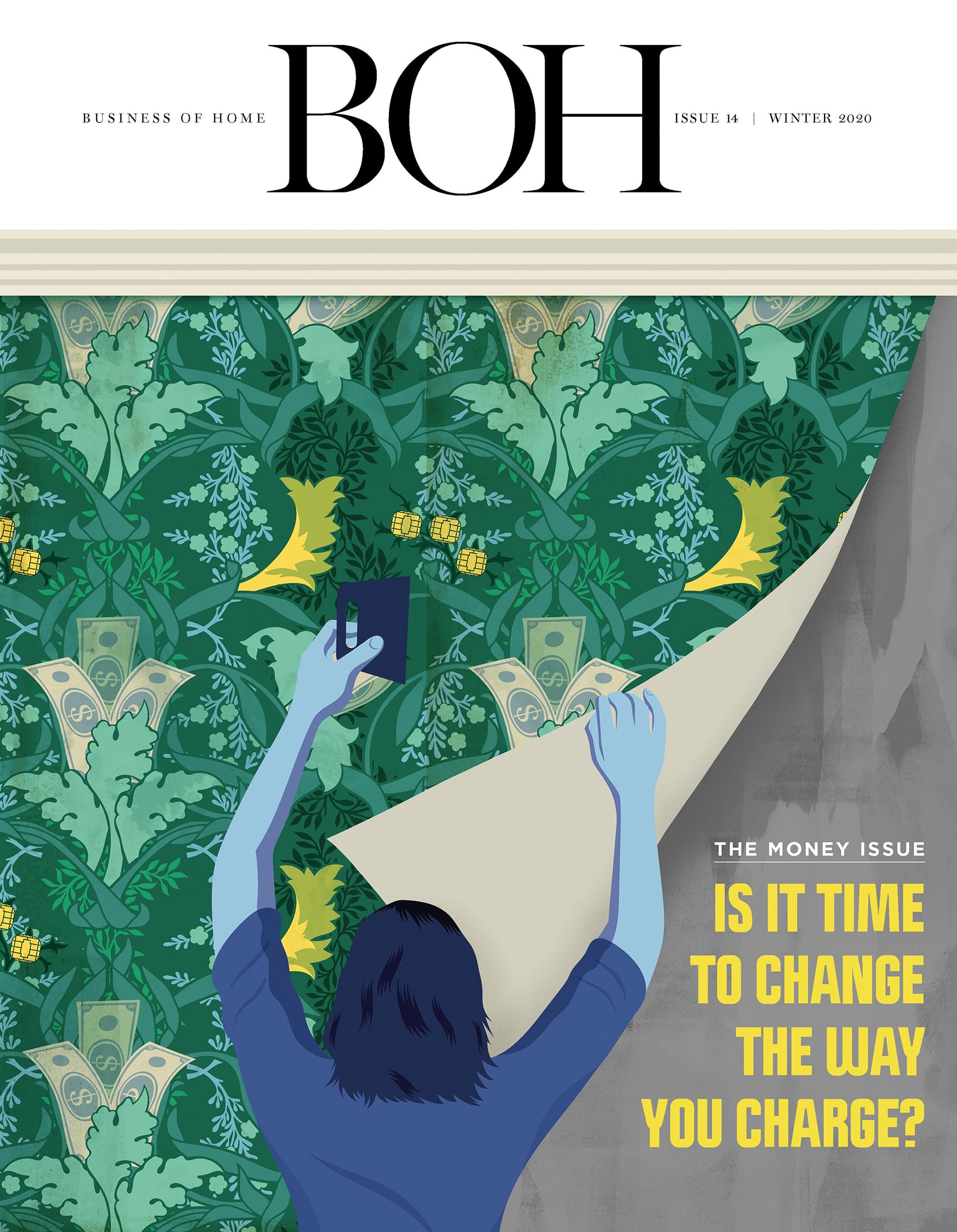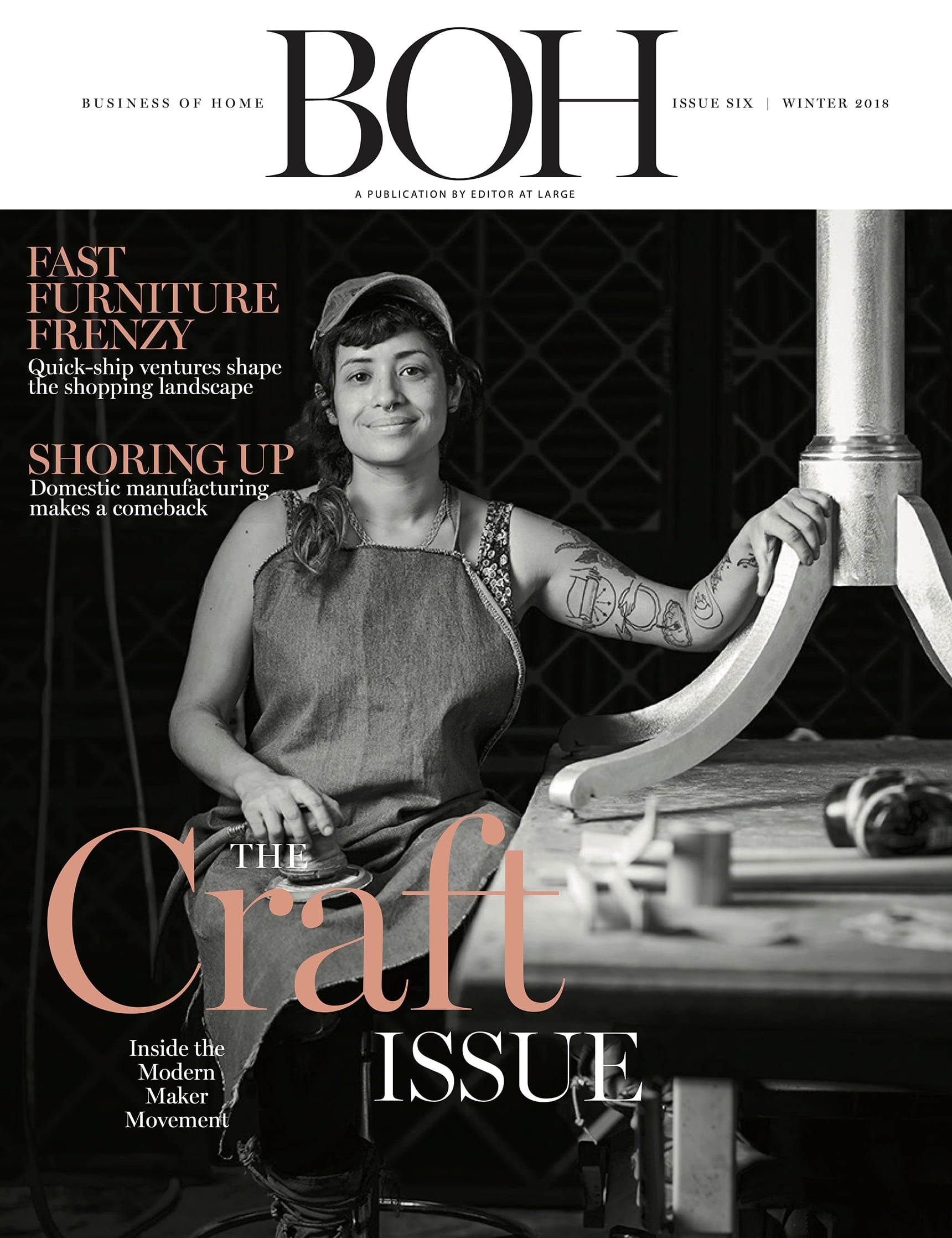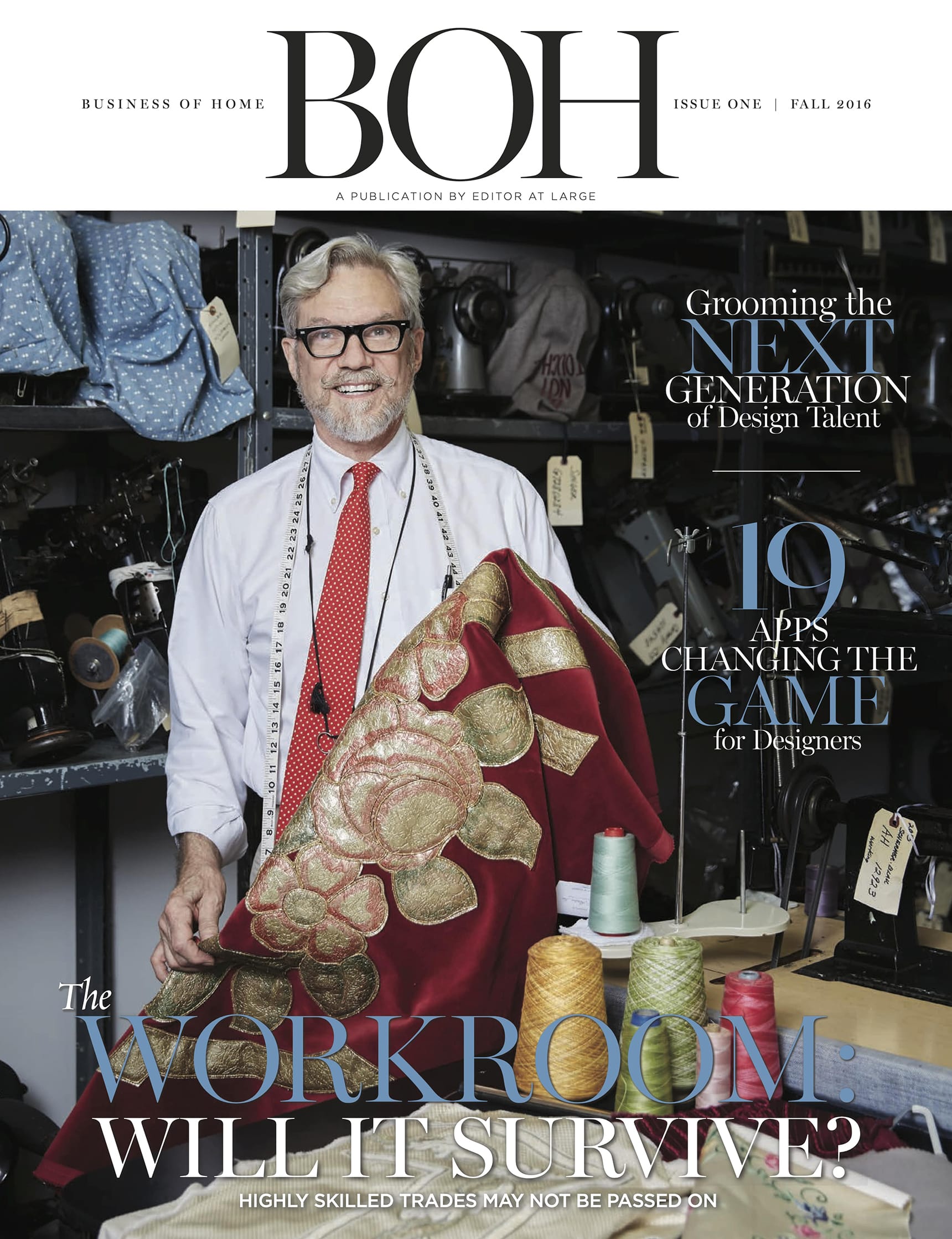Home stagers lift the curtain on how to make it big in a booming sector.
For some, the mark of a successful interior designer is the ability to harness a client’s needs and desires into a perfect marriage of function and form. But for home stagers, the measure of success could not be more different. Staging is about making a home accessible to anyone who might walk in, removing the personal details that designers excel at, and instead leaving just the hint of a potential life that a prospective buyer could live. “The biggest misconception about staging is that all it takes to do it well is being good at decorating,” says Fairfield County, Connecticut–based stager Leia T. Ward. “People think, ‘I’ll put some stuff in and make it look pretty.’ It’s not that at all. It’s more like a form of strategic marketing.”
That business-forward mindset has proven integral to the success of Ward’s firm, LTW Design, which stages vacant luxury properties in the greater New York area. It’s a money-making venture, first and foremost. Stagers are brought in to help a property sell faster and, hopefully, for more than the asking price. According to HomeAdvisor, staged homes will spend 33 to 50 percent less time on the market. A similar survey of the National Realtors Association in 2021 found that 23 percent of buyers’ agents said that home staging raised the dollar value offered between 1 and 5 percent compared with similar homes on the market that hadn’t been staged—a number that may seem insignificant, but which can represent a six-figure difference in the luxury market.
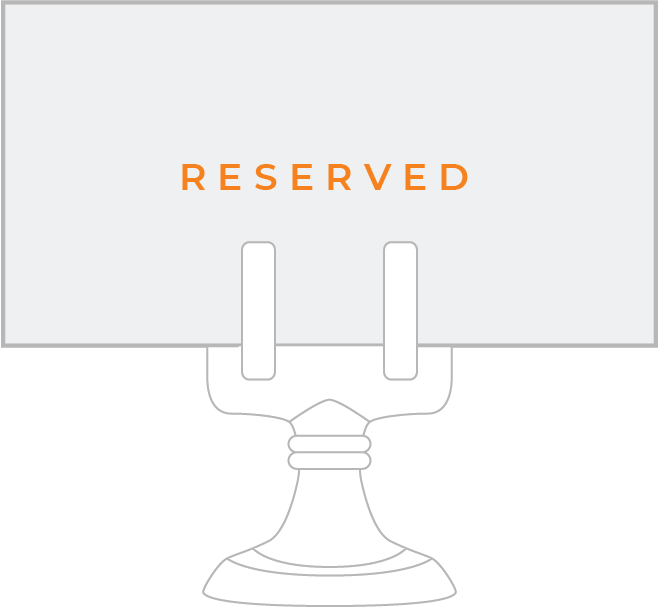
BOH subscribers and BOH Insiders.



















